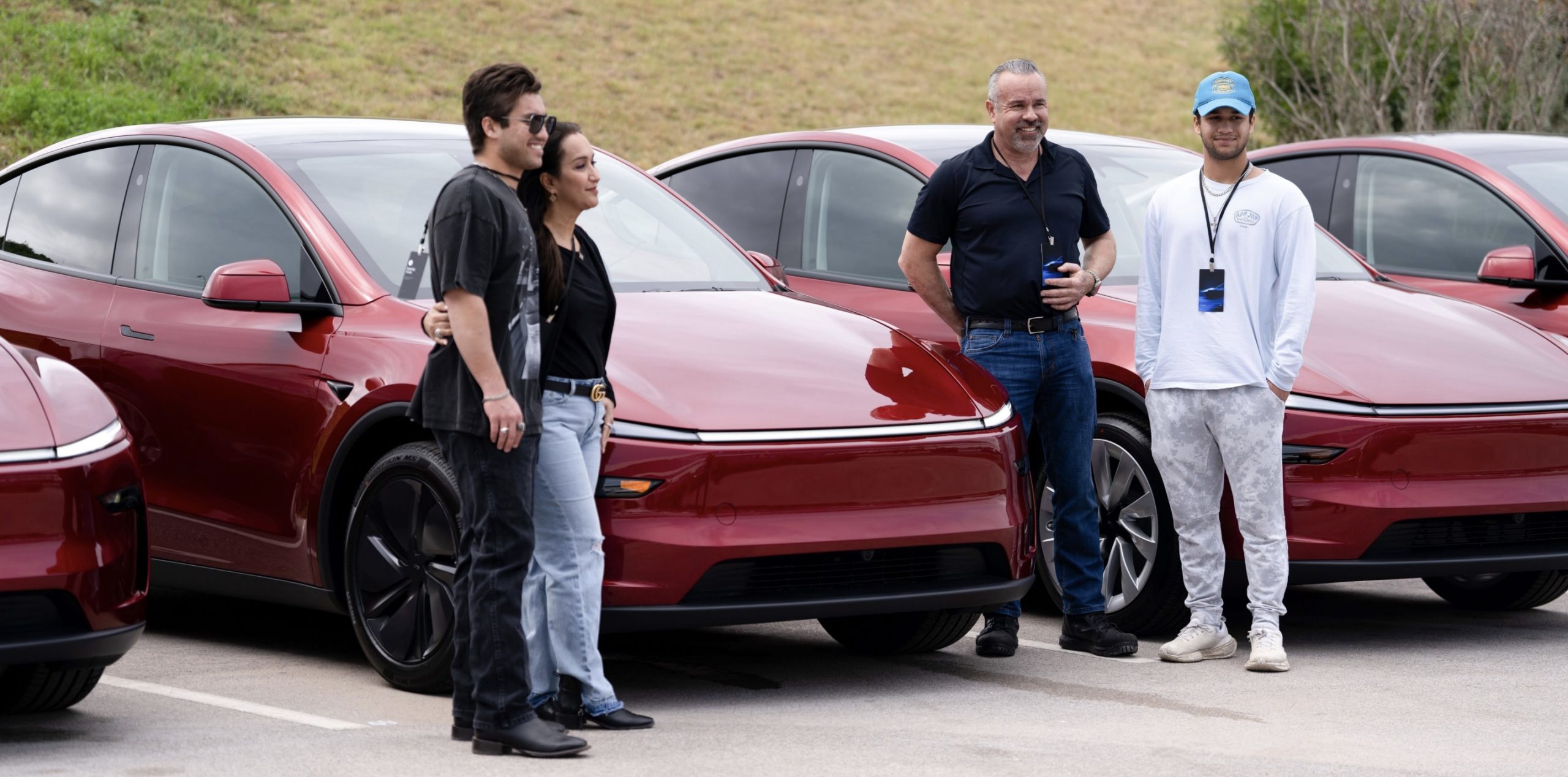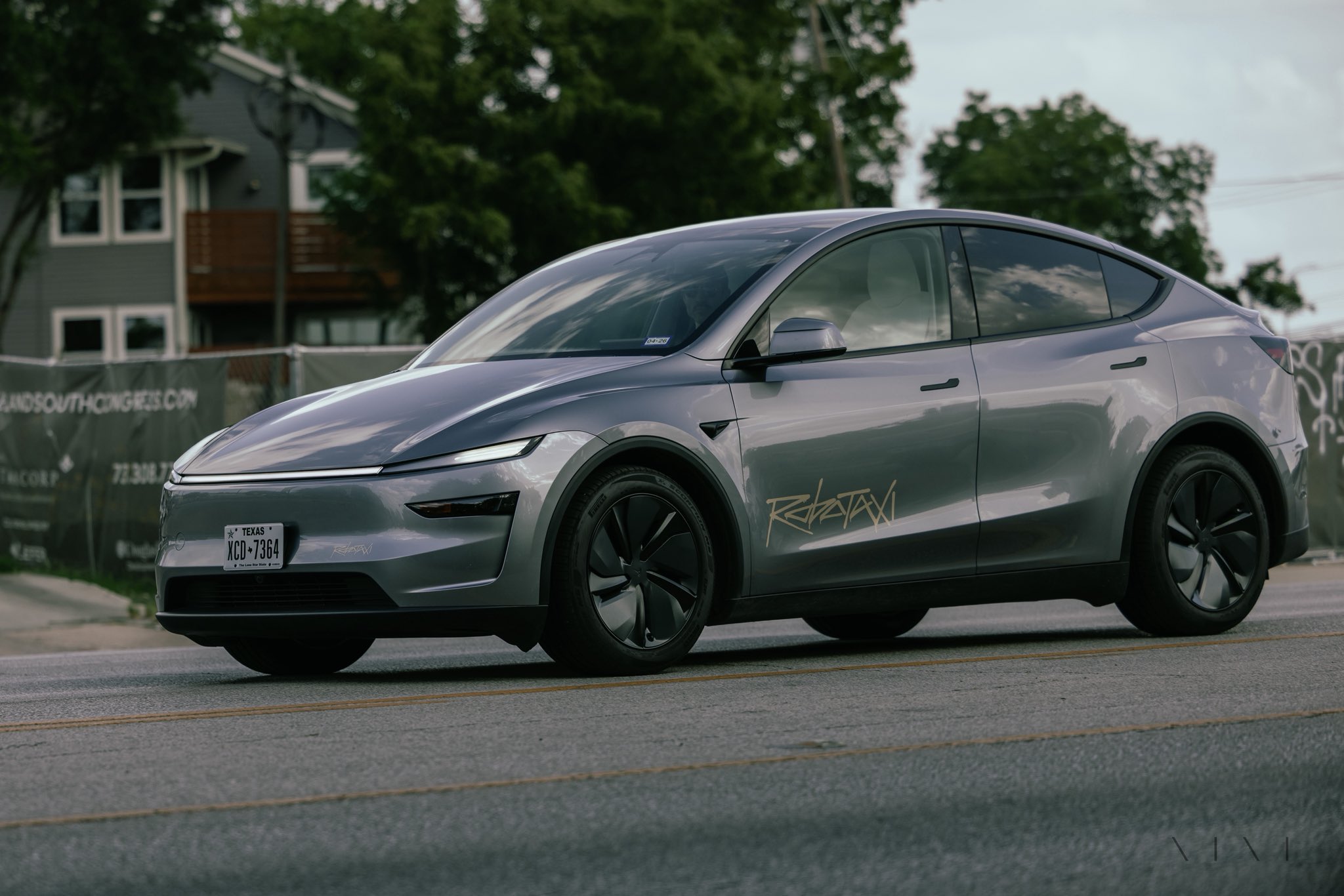Elon Musk
Tesla regains Piper Sandler’s confidence with Robotaxi plans & Q1 Results
Piper Sandler says Tesla delivered the best-case scenario for bulls. $TSLA has catalysts ahead to silence the bears.

Tesla gained Piper Sandler analyst Alexander Potter’s confidence following its Q1 2025 earnings call. Piper Sandler reaffirmed its Overweight rating and $400 TSLA price target, signaling optimism for the company’s robotaxi and affordable vehicle launches expected this year. The firm’s stance reflects Tesla’s resilience amid market challenges.
Despite expectations of weak Q1 financials, Tesla’s stock edged up in after-hours trading, defying skepticism. Piper Sandler’s Alexander Potter noted that the results met the hopes of Tesla supporters, particularly as the company held firm on its timelines. Potter emphasized that anticipation for robotaxi details and new vehicle launches should keep critics at bay, supporting the $400 target.
“In our preview last week, we predicted that (at best) Q1 would be a non-event. With the stock trading up slightly in the after-hours session, it appears our best-case scenario has materialized. Considering generally weak Q1 financials, we think this is the best result that TSLA bulls could’ve reasonably hoped for.
“In our view, the most important Q1 takeaway is this: Tesla didn’t hedge expectations re: launching Robotaxis or lower-priced vehicles in 1H25. With <2 months until the end of June, investors can look forward to some interesting catalysts in the weeks ahead. In our view, this alone should be enough to keep the bears at bay, at least until we have a better idea re: the details of Tesla’s new products, as well as the scale/scope of the Robotaxi launch,” wrote Potter.
Wedbush Securities’ Dan Ives, a longtime TSLA bull, echoed Potter’s optimism for Tesla. Ives raised his price target for Tesla stock from $315 to $350 with a BUY rating. His Tesla upgrade came after Elon Musk’s announcement during the Q1 earnings call that he would reduce his involvement with DOGE, signaling a sharper focus on Tesla.
Tesla’s steady Q1 performance and unwavering commitment to its 2025 roadmap, including the Robotaxi launch and lower-priced models, bolster investor confidence. Piper Sandler’s analysis underscores Tesla’s ability to navigate a competitive electric vehicle market while advancing its technological edge. The upcoming Robotaxi launch and affordable vehicle introductions are pivotal, with analysts expecting these initiatives to drive stock value through 2025.
As Tesla prepares for these milestones, its stock movement reflects market trust in Musk’s vision. With Piper Sandler and Wedbush reaffirming bullish outlooks, Tesla’s strategic moves will remain under close scrutiny, positioning the company to capitalize on its innovation pipeline in a dynamic industry landscape.

Elon Musk
Tesla needs to come through on this one Robotaxi metric, analyst says
“We think the key focus from here will be how fast Tesla can scale driverless operations (including if Tesla’s approach to software/hardware allows it to scale significantly faster than competitors, as the company has argued), and on profitability.”

Tesla needs to come through on this one Robotaxi metric, Mark Delaney of Goldman Sachs says.
Tesla is in the process of rolling out its Robotaxi platform to areas outside of Austin and the California Bay Area. It has plans to launch in five additional cities, including Houston, Dallas, Miami, Las Vegas, and Phoenix.
However, the company’s expansion is not what the focus needs to be, according to Delaney. It’s the speed of deployment.
The analyst said:
“We think the key focus from here will be how fast Tesla can scale driverless operations (including if Tesla’s approach to software/hardware allows it to scale significantly faster than competitors, as the company has argued), and on profitability.”
Profitability will come as the Robotaxi fleet expands. Making that money will be dependent on when Tesla can initiate rides in more areas, giving more customers access to the program.
There are some additional things that the company needs to make happen ahead of the major Robotaxi expansion, one of those things is launching driverless rides in Austin, the first city in which it launched the program.
This week, Tesla started testing driverless Robotaxi rides in Austin, as two different Model Y units were spotted with no occupants, a huge step in the company’s plans for the ride-sharing platform.
Tesla Robotaxi goes driverless as Musk confirms Safety Monitor removal testing
CEO Elon Musk has been hoping to remove Safety Monitors from Robotaxis in Austin for several months, first mentioning the plan to have them out by the end of 2025 in September. He confirmed on Sunday that Tesla had officially removed vehicle occupants and started testing truly unsupervised rides.
Although Safety Monitors in Austin have been sitting in the passenger’s seat, they have still had the ability to override things in case of an emergency. After all, the ultimate goal was safety and avoiding any accidents or injuries.
Goldman Sachs reiterated its ‘Neutral’ rating and its $400 price target. Delaney said, “Tesla is making progress with its autonomous technology,” and recent developments make it evident that this is true.
Elon Musk
Tesla CEO Elon Musk shades Waymo: ‘Never really had a chance’

Tesla CEO Elon Musk shaded Waymo in a post on X on Wednesday, stating the company “never really had a chance” and that it “will be obvious in hindsight.”
Tesla and Waymo are the two primary contributors to the self-driving efforts in the United States, with both operating driverless ride-hailing services in the country. Tesla does have a Safety Monitor present in its vehicles in Austin, Texas, and someone in the driver’s seat in its Bay Area operation.
Musk says the Austin operation will be completely void of any Safety Monitors by the end of the year.
🚨 Tesla vs. Waymo Geofence in Austin https://t.co/A6ffPtp5xv pic.twitter.com/mrnL0YNSn4
— TESLARATI (@Teslarati) December 10, 2025
With the two companies being the main members of the driverless movement in the U.S., there is certainly a rivalry. The two have sparred back and forth with their geofences, or service areas, in both Austin and the Bay Area.
While that is a metric for comparison now, ultimately, it will not matter in the coming years, as the two companies will likely operate in a similar fashion.
Waymo has geared its business toward larger cities, and Tesla has said that its self-driving efforts will expand to every single one of its vehicles in any location globally. This is where the true difference between the two lies, along with the fact that Tesla uses its own vehicles, while Waymo has several models in its lineup from different manufacturers.
The two also have different ideas on how to solve self-driving, as Tesla uses a vision-only approach. Waymo relies on several things, including LiDAR, which Musk once called “a fool’s errand.”
This is where Tesla sets itself apart from the competition, and Musk highlighted the company’s position against Waymo.
Jeff Dean, the Chief Scientist for Google DeepMind, said on X:
“I don’t think Tesla has anywhere near the volume of rider-only autonomous miles that Waymo has (96M for Waymo, as of today). The safety data is quite compelling for Waymo, as well.”
Musk replied:
“Waymo never really had a chance against Tesla. This will be obvious in hindsight.”
Waymo never really had a chance against Tesla. This will be obvious in hindsight.
— Elon Musk (@elonmusk) December 10, 2025
Tesla stands to have a much larger fleet of vehicles in the coming years if it chooses to activate Robotaxi services with all passenger vehicles. A simple Over-the-Air update will activate this capability, while Waymo would likely be confined to the vehicles it commissions as Robotaxis.
Elon Musk
Tesla CEO Elon Musk confirms Robotaxi is set to go unsupervised
Musk has made the claim about removing Safety Monitors from Tesla Robotaxi vehicles in Austin three times this year, once in September, once in October, and once in November.

Tesla CEO Elon Musk confirmed on Tuesday at the xAI Hackathon that the company would be removing Safety Monitors from Robotaxis in Austin in just three weeks.
This would meet Musk’s timeline from earlier this year, as he has said on several occasions that Tesla Robotaxis would have no supervision in Austin by the end of 2025.
On Tuesday, Musk said:
“Unsupervised is pretty much solved at this point. So there will be Tesla Robotaxis operating in Austin with no one in them. Not even anyone in the passenger seat in about three weeks.”
Musk has made the claim about removing Safety Monitors from Tesla Robotaxi vehicles in Austin three times this year, once in September, once in October, and once in November.
In September, he said:
“Should be no safety driver by end of year.”
The safety driver is just there for the first few months to be extra safe.
Should be no safety driver by end of year.
— Elon Musk (@elonmusk) September 4, 2025
On the Q3 Earnings Call in October, he said:
“We are expecting ot have no safety drivers in at least large parts of Austin by the end of this year.”
Finally, in November, he reiterated the timeline in a public statement at the Shareholder Meeting:
“I expect Robotaxis to operate without safety drivers in large parts of Austin this year.”
Currently, Tesla uses Safety Monitors in Austin in the passenger’s seat on local roads. They will sit in the driver’s seat for highway routes. In the Bay Area ride-hailing operation, there is always a Safety Monitor in the driver’s seat.
Three weeks would deliver on the end-of-year promise, cutting it close, beating it by just two days. However, it would be a tremendous leap forward in the Robotaxi program, and would shut the mouths of many skeptics who state the current iteration is no different than having an Uber.
Tesla has also expanded its Robotaxi fleet this year, but the company has not given exact figures. Once it expands its fleet, even more progress will be made in Tesla’s self-driving efforts.








